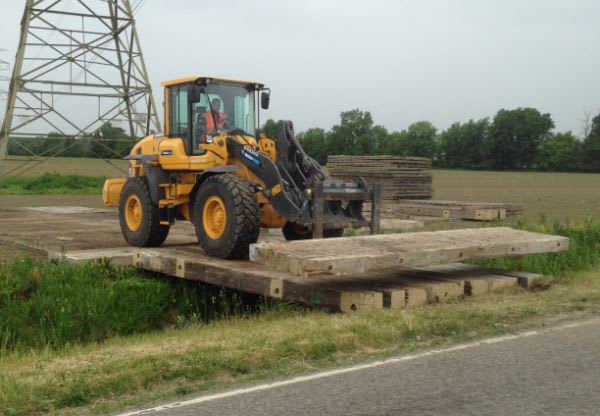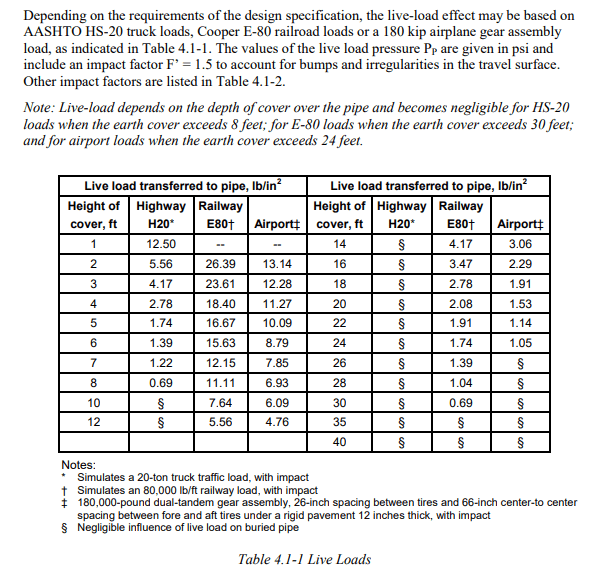JoelTXCive
Civil/Environmental
- Jul 24, 2016
- 927
I have been asked to design a temporary construction 'Air Bridge' spanning over a 36" pipeline.
The pipeline owner specifies a minimum 6" airspace; and our span will be 13ft.
The contractor would like to use 12"x12" crane mats for the bridge. The 12"x12" sections are 'sister-ed' together to form 4ft wide mats of varying lengths.
I'm having difficulty calculating a capacity. There are a ton of websites for crane mat suppliers, but none seem to list their actual material types so that I can look up in the wood NDS. They all just say 'hardwood' or 'douglas fir'
Are there industry standards for these mats?
Or should I just assume #3 grade wood with the lowest bending stress capacity?
Or, I can call out a wood grade on the plans?

Thank you in advance.
The pipeline owner specifies a minimum 6" airspace; and our span will be 13ft.
The contractor would like to use 12"x12" crane mats for the bridge. The 12"x12" sections are 'sister-ed' together to form 4ft wide mats of varying lengths.
I'm having difficulty calculating a capacity. There are a ton of websites for crane mat suppliers, but none seem to list their actual material types so that I can look up in the wood NDS. They all just say 'hardwood' or 'douglas fir'
Are there industry standards for these mats?
Or should I just assume #3 grade wood with the lowest bending stress capacity?
Or, I can call out a wood grade on the plans?

Thank you in advance.

![[idea] [idea] [idea]](/data/assets/smilies/idea.gif)

